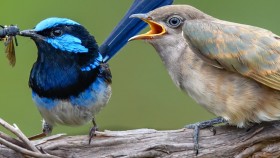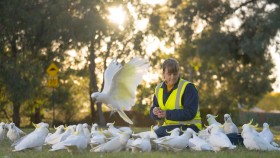Size does matter for sexually deceptive orchids
Researchers at The Australian National University (ANU) have found the size and shape of orchids play a big part in their act of sexual deception to get male wasps to pollinate their flowers.
Until now it had been thought many orchids need only produce floral scent, or chemicals that mimic female insect sex pheromones, to deceive male insects into pollinating their flowers.
But ANU ecologists have discovered orchids mimic how female insects look as well as how they smell.
"The orchids exploiting these wasps both have to look good and smell good to ensure that the transfer of pollen is established," Dr Marinus de Jager who was a Visiting Post-Doctoral Fellow at ANU when he completed this study.
In the first study of its kind researchers have gone beyond looking at the attraction of smell to investigate the role of flower shape and size in sexually deceptive orchids.
Australia is home to most of the world's species of sexually deceptive orchids. These include two different but closely related species of orchid, the broad-lipped bird orchid and the large bird orchid, pollinated by two different species of wasp. Despite their differences, they both produce the same chemical to attract their respective male wasps.
The research found wasps of both species behave very differently towards each orchid. But in both cases males tried to mate more often and for longer with the orchid they normally pollinate.
Professor Rod Peakall, from the ANU Research School of Biology, said the research found that shape and size has a dramatic effect on pollinating behaviour.
"We can present the chemicals on little black beads and pollinators will come in and attempt to mate," Professor Peakall said.
"Without the right shape and size you will get the pollinator to the flower with just smell, but it won't contact the pollen reproductive structures."
Professor Peakall said the sexually deceptive orchids intercept these otherwise private communication channels of the male and female wasp.
"Given all of the focus on chemistry, which is important for getting the pollinator to the flower, what we now know from this study for the first time in any sexually deceptive system is that shape and size is critical," he said.
Dr de Jager said this research will allow for greater investigation into pollinator behaviour as a driver of floral trait evolution in a diverse range of orchids both in Australia and internationally.
The two-year research project focused on species of orchid close to Canberra in the Tallangada state forest and Black Mountain.
The research has been published in the British Ecological Society's journal of Functional Ecology.
Dr de Jager is now a Postdoctoral Researcher at Stellenbosch University, South Africa.








